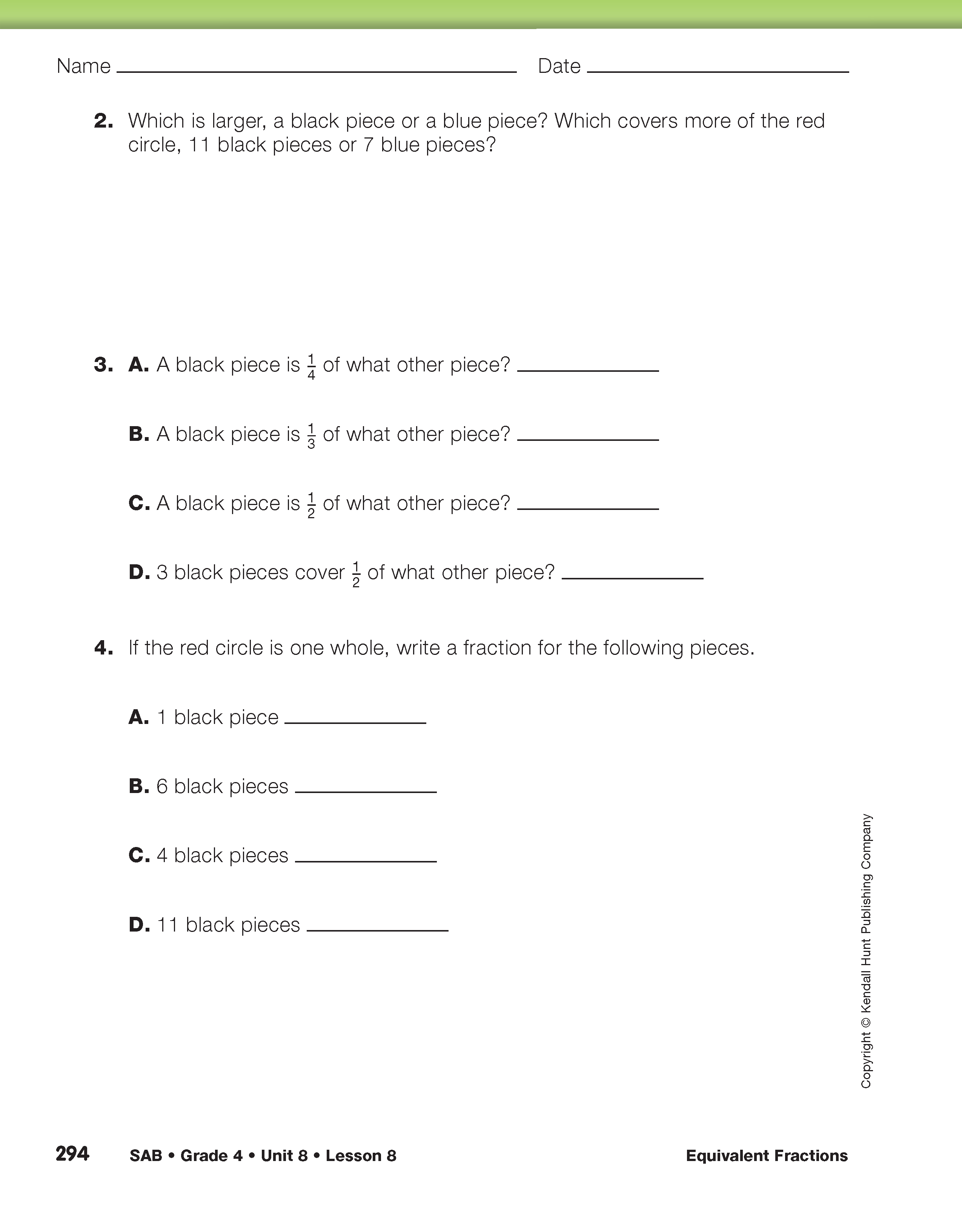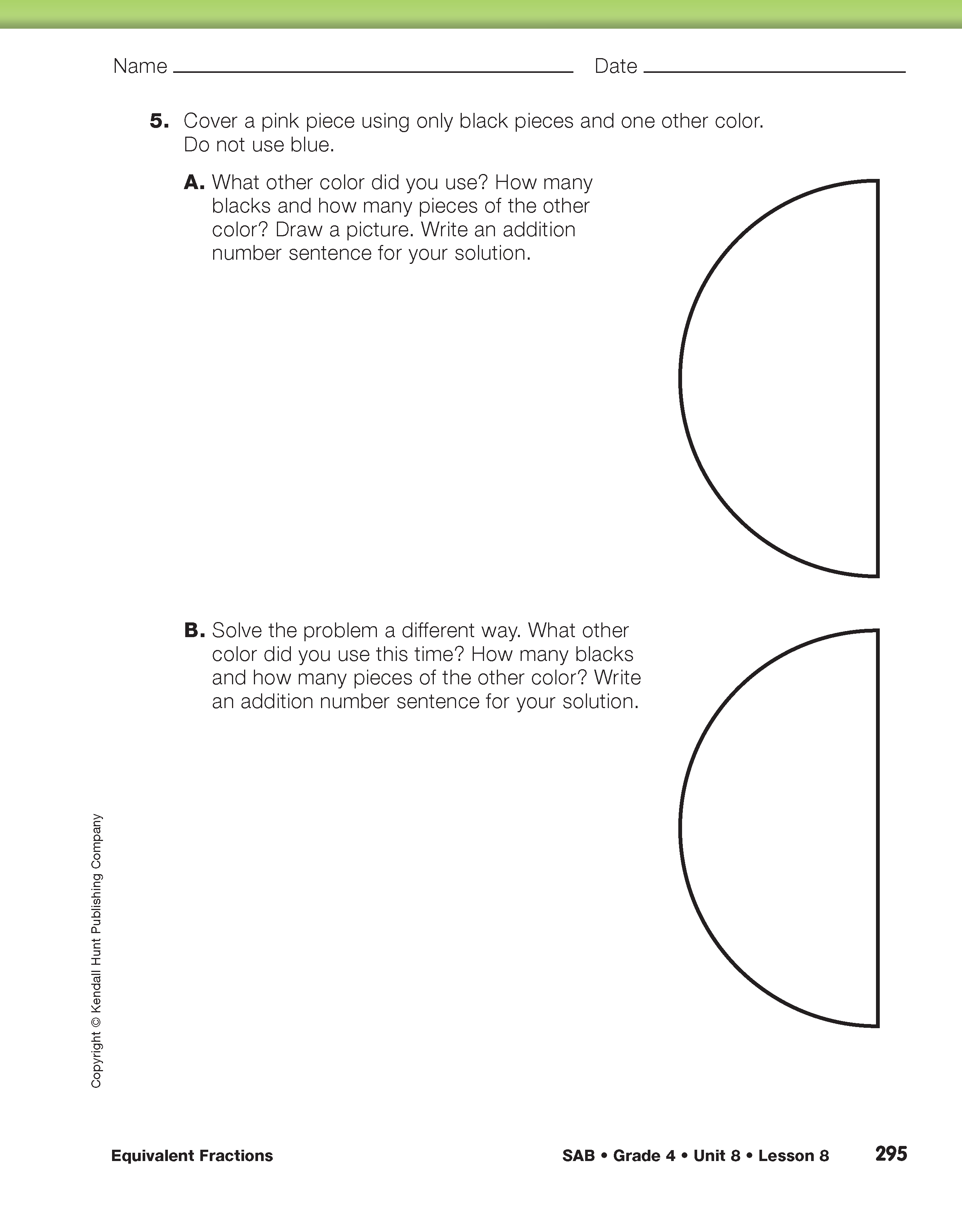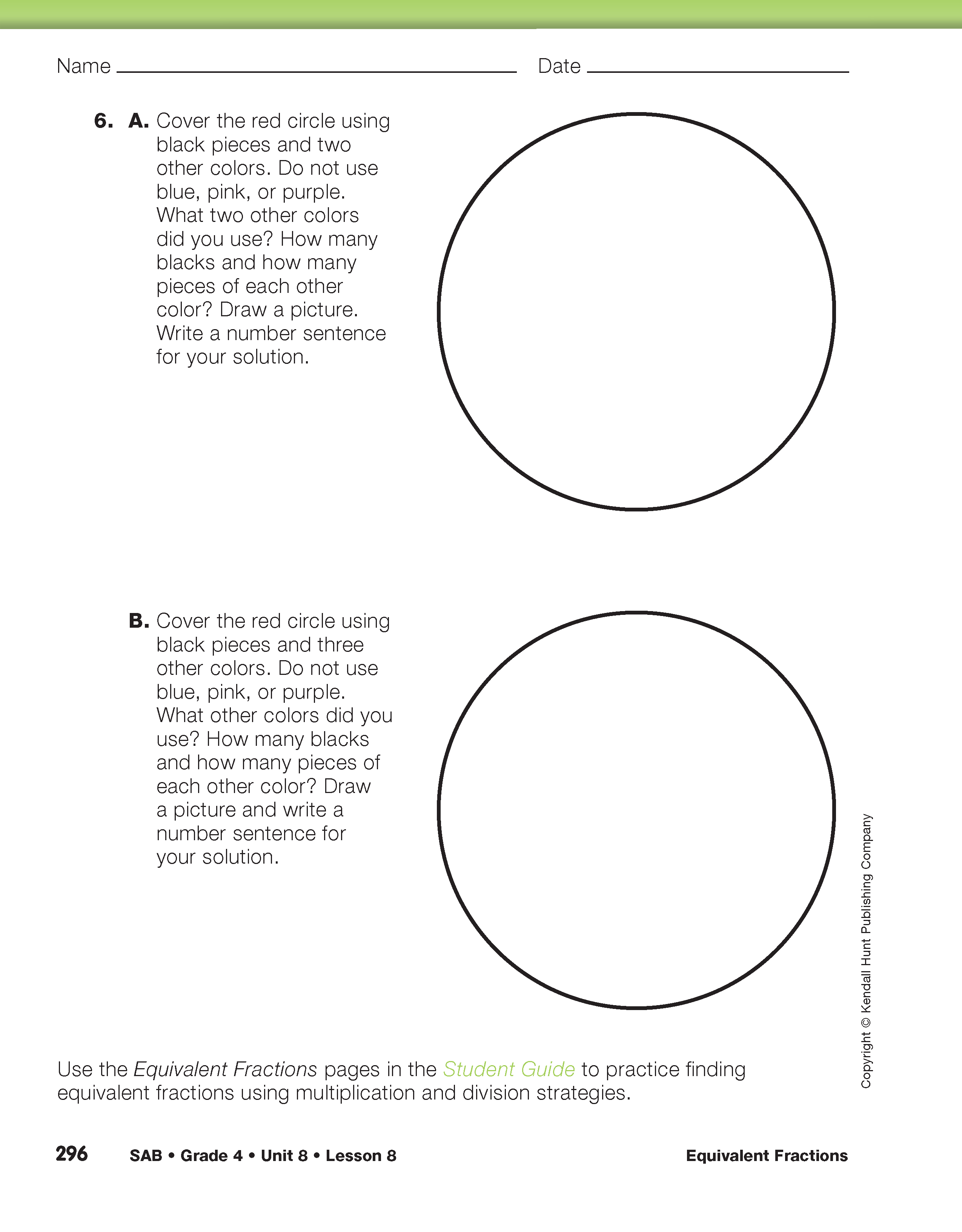
Review student work and progress from previous lessons to guide instructional decisions about the following Expectations:
- E1.
- Represent fractions using area models (circle pieces, fraction strips, drawings) and number lines.
- E2.
- Use words and numbers to name fractions.
Students will have opportunities to further develop their abilities with these Expectations in this lesson while also finding equivalent fractions.
Some of the following prompts can help support students who are still developing skills representing and naming fractional parts using circle pieces and fraction strips.
- Show [fraction] with the circle pieces. What is the whole? Are the parts the same size? How many pieces fit in the whole? How many of those pieces cover [fraction]?
- Show [fraction] with the fraction strips. Show [same fraction] with the circle pieces. How are the representations different? How are the representations the same?
- What fraction of the [red circle, pink piece, etc.] is this piece? How do you know? What does the top number mean? What does the bottom number mean?
Before learning about equivalent fractions, your students need to familiarize themselves with the black fraction circle pieces. Have them take out the red circle, pink, yellow, blue, orange, aqua, and black fraction circle pieces and put away the green and purple pieces. Point out to students the closeness in size of the black and blue pieces and how they may be easily confused.
With partners, have students complete the Black Circle Pieces pages in the Student Activity Book. The questions are very similar to the exploratory questions in earlier lessons about other fraction circle pieces.
After students have had the opportunity to explore the black pieces using Questions 1–6, ask them to share their solutions with the class.
















